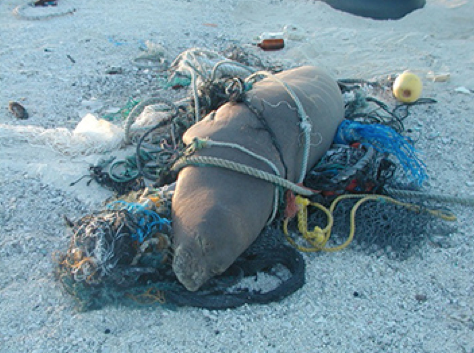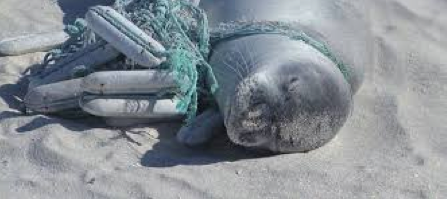 The Hawaiian monk seal is an endangered marine mammal that inhabits, and is endemic to, the Hawaiian Islands. Despite decades long multi-disciplinary research and recovery tactics, the future survival of this species is still tenuous with between 1,350 and 1,400 individuals remaining at the end of 2017.
The Hawaiian monk seal is an endangered marine mammal that inhabits, and is endemic to, the Hawaiian Islands. Despite decades long multi-disciplinary research and recovery tactics, the future survival of this species is still tenuous with between 1,350 and 1,400 individuals remaining at the end of 2017.
The species is divided into two primary sub-populations. One sub-population that inhabits the Northwestern Hawaiian Islands (NWHI), and another sub-population that inhabits the main Hawaiian Islands (MHI) of Niihau, Kauai, Oahu, Molokai, Maui, Lanai, Kahoolawe and Hawaii Island.
The sub-population of seals in the NWHI has generally suffered from annual declines for decades due to several natural and potentially human-related causes, some of which have not, as-yet, been fully understood. However, in the past few years there has been a very small percentage increase of the population. The difficulty of studying and impacting the sub-population in the NWHI is exacerbated by the extreme remoteness of these islands and the complicated logistics and costs of mounting scientific field expeditions to the area.
The sub-population of seals in the main Hawaiian Islands (MHI) is currently static (neither growing or falling), however, generally the MHI provides for good seal survival rates, more abundant food sources and other positive environmental conditions. This population in the MHI represents an important opportunity for us to save this species and is therefore the primary focus of our work.
The key challenges to species protection & recovery include:
Human-seal interaction. Inappropriate human-seal interaction can negatively impact pupping behavior and pup survival, can disrupt needed monk seal rest cycles, can lead to conditioning seals to human presence posing a danger to both seals and humans, and can expose seals to attacks from pets and their related injuries, disease and death. Unfortunately, there have also been multiple cases of violence and fatal attacks upon monk seals by humans.
For your safety and the animals’ stewardship, please give them space when seen on the shoreline. If Hawaii Marine Animal Response (HMAR), law enforcement or other NOAA-sanctioned personnel (identifiable by uniform or ID) are on scene when an animal is present, please follow their instructions and recommendations for safe and responsible viewing of the animals. Please stay behind any signs or ropes that may have been erected by HMAR, law enforcement or other NOAA-authorized personnel. If no authorized personnel, or signs and ropes are present, it is recommended that you stay at least 50 feet from monk seals, 150 feet if you encounter a seal mom with a pup. Pets, especially dogs, can pose a risk to monk seals. Please keep them on a leash when in the presence of monk seals to avoid injury or disease transmission for both seals and pets. In the ocean, monk seals may exhibit inquisitive behavior. Approaching or attempting to play or swim with them may alter their behavior and their ability to fend for themselves in the wild. Attempting to interact with, swim with or play with seals in the water can be dangerous. Enjoy monk seals from a distance and use binoculars and telephoto lenses to get the best views without disturbing the seals.
Fishery and monk seal interactions include hookings on fishing gear and entanglement in fishing nets, both of which can lead to monk seal injury or death. Review NOAA’s fisheries interactions guidelines for more information on how to avoid seal interactions.


Exposure to parasitic and viral diseases. The Hawaiian monk seal is susceptible to several diseases that could lead to widespread seal deaths. For example, an outbreak of Phocine distemper virus (PDV) in 1988 caused the death of over 10,000 harbor seals in northern Europe. In the same year, two more outbreaks of viral disease in aquatic mammals occurred, one in Lake Baikal, Siberia, the other in waters near Britain and the Netherlands. Then in 2002, another morbillivirus epidemic in the North Sea killed over 21,000 seals. A disease outbreak such as this in the Hawaiian monk seal population could result in many seal deaths and weaken the species to the extent it may be unable to recover. In recent years Toxoplasmosis and Leptospirosis have killed numerous Hawaiian monk seals and viruses in the morbillivirus family also pose very dangerous threats to our population.
Habitat threats. Changes in, or damage to monk seal habitat are contributing to the danger posed to the species. These habitat threats include coastal development and sea level rise, which are shrinking the critical habitat areas needed by monk seals for rest and pupping activity. Since these seals spend approximately 1/3 of their time on land, preserving beaches and other coastal areas where seals can haul out is critical. In addition, inland water runoff can become dangerous pathways for Toxoplasma gondii and Leptospira spp. (see “Exposure to Diseases” above), both of which cause diseases that can be fatal to Hawaiian monk seals.
Public understanding and support for the Hawaiian monk seal. Many people living in or visiting the Hawaiian Islands are either ambivalent to, or have no knowledge of the Hawaiian monk seal due to the small number of seals or a lack of exposure to the animals during recent history. There is also a percentage of the human population that has negative views of the seals due to misinformation or a misunderstanding of Hawaiian monk seals, their behaviors and their habitat. Education and outreach, which positively changes public attitudes and behaviors, can reduce damaging human and fishery interactions.
Field response, educational and outreach capacity. Due to competing government priorities, federal and state agencies charged with the support of Hawaiian monk seal field response, education and community outreach activities, have insufficient funding to mount all of the work and activity needed. Therefore, public and private funding for nonprofits that can provide the work to fill this void can positively impact the other key challenges listed above for saving the Hawaiian monk seal.
